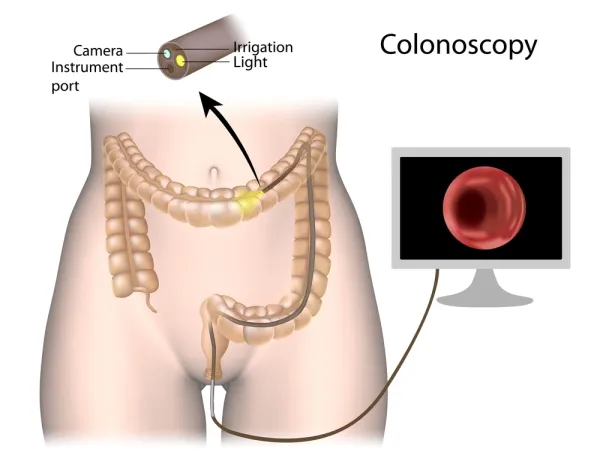Outpatient Facility Coding Alert
Catch Your Eye Surgery Coding Errors Before CMS Does

Targets: Overcoding, insufficient documentation for key procedures.
Getting your eye surgery coding right has always been a priority and now it’s even more important. Errors in cataract surgery coding in particular have attracted recent unfavorable attention from Medicare— which means claims scrutiny and possible paybacks if they find improper reimbursement.
White-hot focus: Cataract surgery with intraocular lens (1 stage) is the top-reported Medicare procedure for ambulatory surgery centers, according to VMG Health’s Multi-Specialty Intellimarker 2016, which means the volume of claims—and the risk of compounded errors and refunds—could be substantial for these services.
What CMS found: Earlier this year, CMS released its “Appendices for the Medicare Fee-for-Service 2016 Improper Payments Report” as part of its Comprehensive Error Rate Testing (CERT) program. The report breaks down the most egregious errors among Medicare claims, and covers the causes of the improperly paid charges. Overall, the government found an 11.7 percent improper payment rate among Part B claims during 2016, with the vast majority of those being classified as overpayments to providers.
The majority of Part B errors were categorized as such due to insufficient documentation (totaling $5.5 billion in errors), while incorrect coding was also a major error source (costing $2.7 billion in errors). Medical necessity and no documentation errors were also seen among Part B claims.
Eye Procedures Logged Almost $100 Million in Errors
When the government scrutinized eye procedures, it found a startling 13.5 percent error rate among these claims, which were the source of $97.5 million in errors. The CERT auditors found a 3.8 percent error rate among ophthalmology claims in general, and cataract removal/lens insertion marked another $45 million in improper payments, with a 2.3 percent improper payment rate.
The vast majority of improper payments (75 percent) made to ophthalmologists were due to insufficient documentation, while another 25 percent were due to incorrect CPT® coding.
Consider the following examples of improperly coded eye claims:
Example 1: The physician reports 65426 (Excision or transposition of pterygium; with graft) for a surgery performed on a 67-year-old patient with visually significant pterygium of the right eye. The documentation to support the claim was as follows:
The patient was prepped in a sterile fashion and anesthetized. The pterygium was separated from the underlying scar tissue of the sclera, and a muscle hook was passed through the upper conjunctiva. The head of the pterygium was dissected carefully from the apex toward the limbus, the upper angle of the conjunctiva was grasped with fine forceps. Westcott scissors were employed to separate the conjunctiva from the underlying Tenon’s capsule. Bleeding was controlled using electrocautery and TobraDex® was placed in the eye. The eye was patched and the patient was asked to report back to our office the next day for evaluation.
Do you see the problem with this chart? The operative note is very detailed and thorough, but does not mention placement of a graft. Therefore, this claim was incorrectly billed and the documentation was insufficient to support CPT® code 65426.
Example 2: You report 66983 (Intracapsular cataract extraction with insertion of intraocular lens prosthesis [1 stage procedure]) and the documentation for the procedure is thorough, describing the cataract excision as well as the lens insertion in great detail. However, when the Medicare contractor requests the patient’s charts, the reviewer is unable to find sufficient documentation indicating that the patient’s vision is impaired due to the cataracts with activities of daily living and the progression of the impairment, nor did the physician document any other exam findings for the procedure, which Medicare guidelines require. The only office visit notes say, “Patient presents for cataract evaluation. Surgery scheduled for Dec. 18.”
Therefore, the documentation is insufficient to support billing 66983, medical necessity for the procedure is not met, and this would be classified as an overcoded service.
Resources: To read the full CERT document, visit https://www.cms.gov/Research-Statistics-Data-and-Systems/Monitoring-Programs/Medicare-FFS-Compliance-Programs/CERT/Downloads/AppendicesMedicareFee-for-Service2016ImproperPaymentsReport.pdf.
To receive a copy of the VMG Health study, fill out the form at http://vmghealth.com/publications/intellimarker/.
Related Articles
Outpatient Facility Coding Alert
- HOPD/ASC Trends:
Understand How Your Patient Demographics Affect Your Services, Payment
Burdensome HDHPs, migrating physicians—and more—in 2 national studies. Taking a macro view—rather than a micro [...] - Catch Your Eye Surgery Coding Errors Before CMS Does
Targets: Overcoding, insufficient documentation for key procedures. Getting your eye surgery coding right has always [...] - Financial Strategies:
Apply 8 Benchmarks to Assess Your Surgery Center's Financial Health
Start with 2 or 3 key measures—use those to evaluate your top concerns. If you’re [...] - CPT® 2017:
Wake Up to These Moderate Sedation Changes
Your scope and vascular coding is different this year. Subtle adjustments in coding definitions from [...] - You Be the Coder:
Ultrasound with Prostate Biopsy
Question: Please share if you think that the following note substantiates a diagnostic ultrasound: “Transrectal US/guidance [...] - Reader Question:
Strapping With Other Procedures?
Question: Can we report 29540 for strapping with other procedures, such as fracture care, or is [...] - Reader Question:
Missed Excision Measurement
Question: We have an op report for excision of a “subcutaneous mass” of the back with [...]




